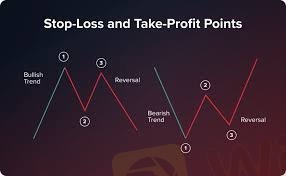
2024-12-24 00:46
Na indústriaStop-loss vs reduced exposure: Managing Christmas
#reducingvsclosingpositionsaroundchrismasmichriches#
*Stop-Loss Strategy*
1. *Set a stop-loss level*: Determine a price level at which to automatically close a position if it moves against you.
2. *Limit potential losses*: Stop-loss orders can limit potential losses if the market moves against your position.
3. *Risk management*: Stop-loss orders can help manage risk by automatically closing positions that reach a certain loss threshold.
4. *Potential drawbacks*: Stop-loss orders can be triggered by market volatility, resulting in unnecessary closures.
*Reduced Exposure Strategy*
1. *Reduce position sizes*: Decrease the size of your positions to minimize potential losses.
2. *Diversify portfolios*: Spread investments across various asset classes to reduce reliance on individual assets.
3. *Lower risk*: Reducing exposure can lower potential losses if the market moves against your positions.
4. *Potential drawbacks*: Reducing exposure may also limit potential gains if the market moves in your favor.
*Key Differences*
1. *Risk management approach*: Stop-loss strategies focus on limiting losses through automatic closures, while reduced exposure strategies aim to minimize losses by reducing position sizes.
2. *Market volatility*: Stop-loss strategies can be triggered by market volatility, whereas reduced exposure strategies are less susceptible to market fluctuations.
3. *Potential gains*: Reduced exposure strategies may limit potential gains, whereas stop-loss strategies do not directly impact potential gains.
*Choosing the Right Strategy*
1. *Risk tolerance*: Consider your risk tolerance and adjust your strategy accordingly.
2. *Market analysis*: Evaluate market conditions and adjust your strategy based on potential market movements.
3. *Trading goals*: Align your strategy with your trading goals, whether prioritizing risk management or potential gains.
Ultimately, a combination of both stop-loss and reduced exposure strategies may be the most effective approach to managing Christmas trading risk.
Gostar 0
FX1985175646
Trader
Discussões populares
Análise de mercado
Brasileiros FX
Análise de mercado
Brasileiros no FOREX
Análise de mercado
Don't buy Bitcoin now! Look at my review and description in the print!
Análise de mercado
análises do mercado financeiro ao vivo confira
Na indústria
Não consegui sacar meus peofits
Na indústria
Não é possível retirar
Categoria do mercado

Plataforma

Exibições

IB

Recrutamento

EA

Na indústria

Mercado

Índice
Stop-loss vs reduced exposure: Managing Christmas
 Nigéria | 2024-12-24 00:46
Nigéria | 2024-12-24 00:46#reducingvsclosingpositionsaroundchrismasmichriches#
*Stop-Loss Strategy*
1. *Set a stop-loss level*: Determine a price level at which to automatically close a position if it moves against you.
2. *Limit potential losses*: Stop-loss orders can limit potential losses if the market moves against your position.
3. *Risk management*: Stop-loss orders can help manage risk by automatically closing positions that reach a certain loss threshold.
4. *Potential drawbacks*: Stop-loss orders can be triggered by market volatility, resulting in unnecessary closures.
*Reduced Exposure Strategy*
1. *Reduce position sizes*: Decrease the size of your positions to minimize potential losses.
2. *Diversify portfolios*: Spread investments across various asset classes to reduce reliance on individual assets.
3. *Lower risk*: Reducing exposure can lower potential losses if the market moves against your positions.
4. *Potential drawbacks*: Reducing exposure may also limit potential gains if the market moves in your favor.
*Key Differences*
1. *Risk management approach*: Stop-loss strategies focus on limiting losses through automatic closures, while reduced exposure strategies aim to minimize losses by reducing position sizes.
2. *Market volatility*: Stop-loss strategies can be triggered by market volatility, whereas reduced exposure strategies are less susceptible to market fluctuations.
3. *Potential gains*: Reduced exposure strategies may limit potential gains, whereas stop-loss strategies do not directly impact potential gains.
*Choosing the Right Strategy*
1. *Risk tolerance*: Consider your risk tolerance and adjust your strategy accordingly.
2. *Market analysis*: Evaluate market conditions and adjust your strategy based on potential market movements.
3. *Trading goals*: Align your strategy with your trading goals, whether prioritizing risk management or potential gains.
Ultimately, a combination of both stop-loss and reduced exposure strategies may be the most effective approach to managing Christmas trading risk.
Gostar 0
Também quero comentar.
Perguntar
0Comentários

Ainda não há comentários. Faça o primeiro.

Perguntar
Ainda não há comentários. Faça o primeiro.